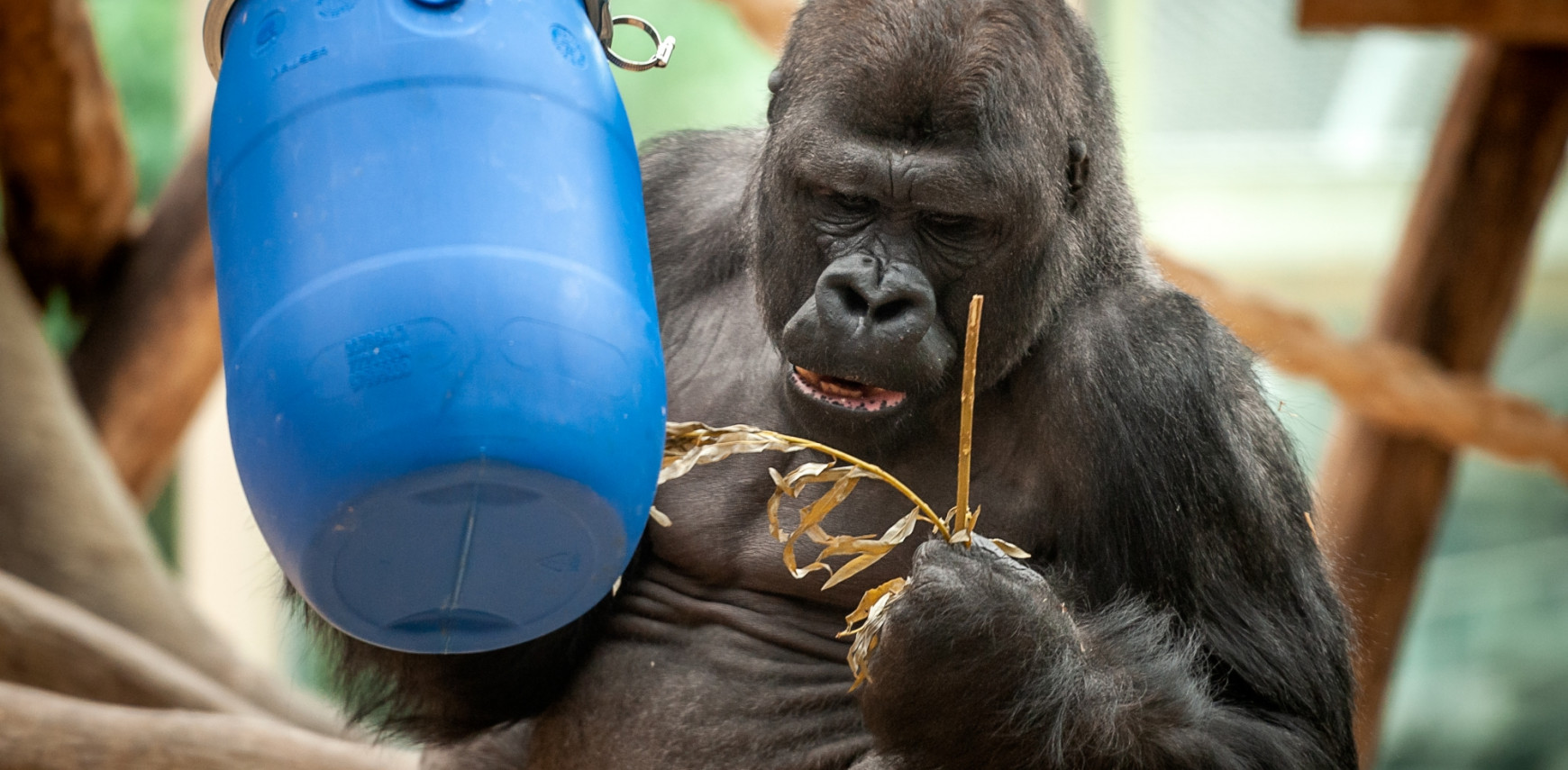Green leaves for gorillas
Gorillas do enjoy a green leaf. Leaves of the willow tree are among their favourite chews. Finding nutritious leaves as winter food for our animals is not always easy. Hence our joining forces with Odisee University College in launching a research project that consists of examining a particular storage method for fresh willow leaves. We are examining whether the so-called ‘ensiling’ of leaves and twigs, as farmers do to turn grass into silage, preserve more nutrients in food than the currently used alternatives such as freezing and drying foliage. “Our research is essential for the quality of food for our animals”, says Matthias Papies, mammal curator at Antwerp ZOO and Planckendael ZOO.
BACKGROUND
Different apes like to eat fresh foliage, same as certain sungulates such as giraffes, okapis and bongos do. We use the term ‘browse’ for leaves and twigs. Animals eating this foliage are called ‘browsers’. “Browsers need leaves all year round. Not less in winter. It is very important for their health. Obviously in summer this is not a problem”, explains Matthias Papies, mammal curator at Antwerp ZOO and Planckendael ZOO. “But in the winter fresh leaves are scarce in our climes. Of course there are alternatives, such as offering frozen foliage, dried leaves or leaves of roses from greenhouses. But we are always looking for quality food. We want to monitor the preservation of the stored products and examine their nutritional value, which is also with regard to the logistic aspects.” In collaboration with project manager Sarah Depauw of Odisee University College at Sint-Niklaas, Agriculture and Biotechnology section, we have started a research project on ensiling and feeding browse. Our purpose is to evaluate if offering foliage as winter food is a valuable alternative.
Leaf eaters also need fresh leaves in winter. It is very important for their health.
HOW EXACTLY DOES THE RESEARCH WORK?
Willow leaves and twigs are pruned and ensiled in summer. Ensiling can be compared to what farmers do with grass or corn to make silage for use during the winter. “We have compressed these greens in drums or baled with plastic wrapping”, explains Petra Janssen, student of animal care at Odisee University College. “After six months of storage the result is very good. To keep the quality of the foliage optimal we tested different storage techniques and added supplements such as nitrogen and sugar cane syrup. That may result in a difference in taste and leaf hardness. So we are experimenting with this different storage method. The preliminary analyses show that both preservation methods provide healthy food for the gorillas.” Three times a day Petra fills four barrels with the leaves and twigs and hangs them in the gorilla enclosure at Antwerp ZOO. She then observes the animals for two and a half hours. “I note what each animal does individually. How they approach the food, how much they eat. And how they remove the twigs from a barrel. Sometimes they hold it above their head to shake the content out. I see also they like to take the trouble to pick everything loose.”
The preliminary analyses show ensiled leaves and sprigs are healthy for the gorillas so we can use it for food.
WHAT IMPACT DOES THE RESEARCH HAVE?
“The ultimate goal of these practical tests is to provide winter greens with a high nutritional value and which the animals enjoy eating”, continues Matthias Papies. “We already have various options for the winter, but we are always in search of better ways of providing food. Therefore we want to be able to compare the nutritional value of this ensiled browse. Prolonging the preservation time of a product also means that the quality of the nutrients is declining. As with dried and frozen leaves, there will also be a loss of nutrients in ensiled foliage. Research has already been done on how ensiled foliage reacts to certain additives. We examine the nutritional value after the process and/or possible side effects.” The first results of our study look good in all respects. “The gorillas find the food tasty and spend a lot of time munching it. And that’s always a good thing for animals living in a zoo, because in the wild they also spend a lot of time looking for food and picking it. Our tests reflect their natural behaviour as well. It is clearly very enriching for the animals”, concludes Petra. “I also see that the impact of the browse depends on the vegetables the gorillas are given. If they are given food that is less tasty to them, such as winter radish, they immediately go for the barrels with ensiled sprigs. But first of all they go for bell peppers and zucchini, and get interested in the food barrels later.”
The ultimate scope of these practical tests is to have green winter food with a high nutritional value that are also a delicacy for our animals

